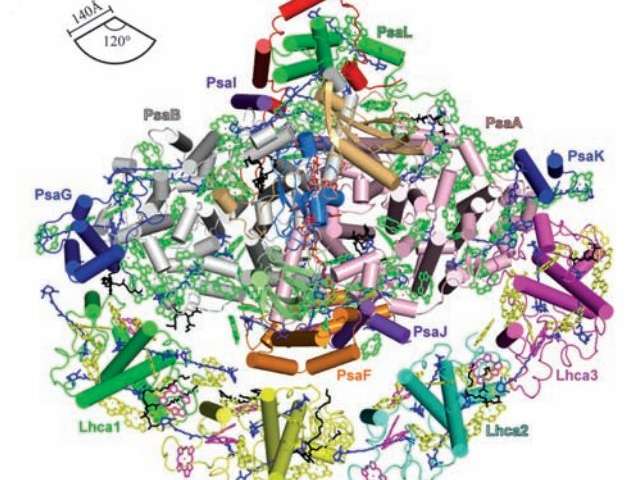

Scientists have been studying the means by which plants convert sunlight to energy for many years, and while they have made significant progress in understanding how it works in general, they still do not really know how it works at the molecular/atomic level. To find out, they have been using tools to capture images at such levels during various parts of the process. In this new effort, the researchers built on work done by other teams attempting to capture imagery of the network of molecules that make up pigment-protein complexes.
Plants that use photosynthesis to convert sunlight to energy have two pigment-protein parts—photosystem I (PSI) and photosystem II (PSII)—the purpose of each is to capture sunlight and then to transfer the energy in it to the hub. The researchers in this effort focused on PSI, and the core that surrounds it, the LLHCI.
Prior efforts to capture imagery of LLHCI has resulted in an ability to see an overview of a network of molecules, which includes carotenoids, phylloquinones and chlorophylls, but the results have not yet been sharp enough to allow for making out the actual structure of the molecular complex. In this new effort, the researchers used X-ray crystallography on pea plants to get sharper images of LLHCI—at a resolution of 2.8 angstroms—close enough to allow them to see detailed arrangements of cofactors and pigments. Their efforts have resulted in an ability to see four additional light-harvesting complexes, providing more details on the chemical nature and geometrical arrangements of the pigments.
The work done by the researches is one more step in the long process of completely understanding photosynthesis which perhaps may one day help lead to the creation of super-efficient solar cells. (Phys.org)

86-10-68597521 (day)
86-10-68597289 (night)

86-10-68511095 (day)
86-10-68512458 (night)

cas_en@cas.cn

52 Sanlihe Rd., Xicheng District,
Beijing, China (100864)

